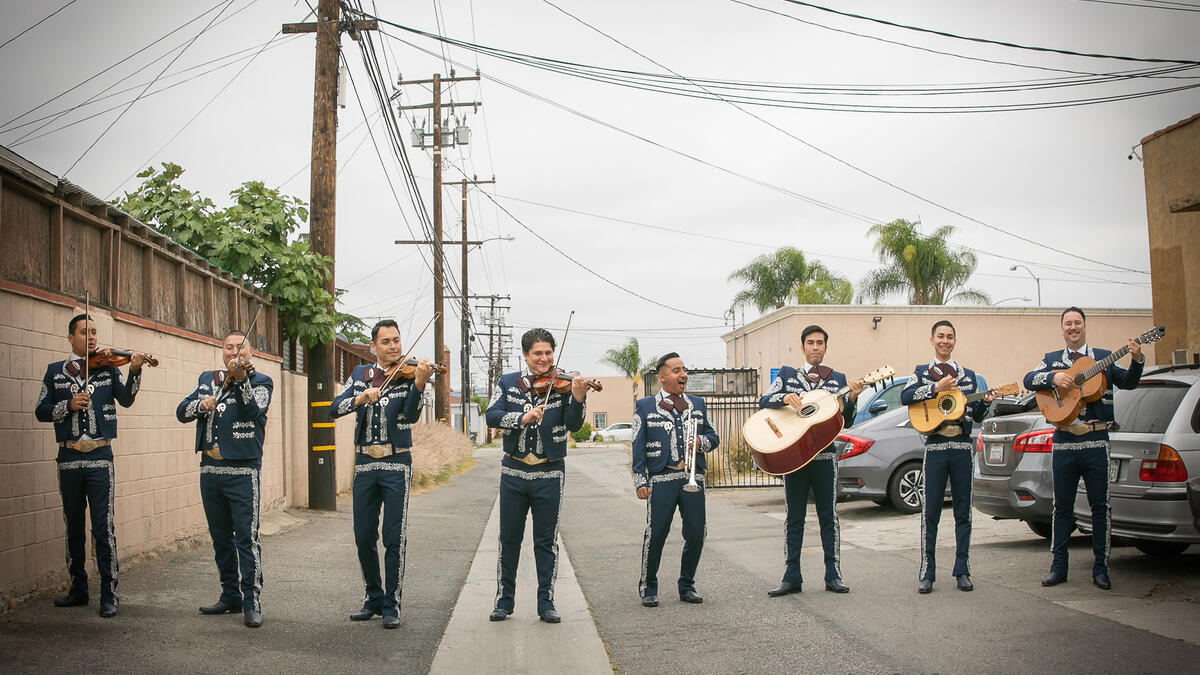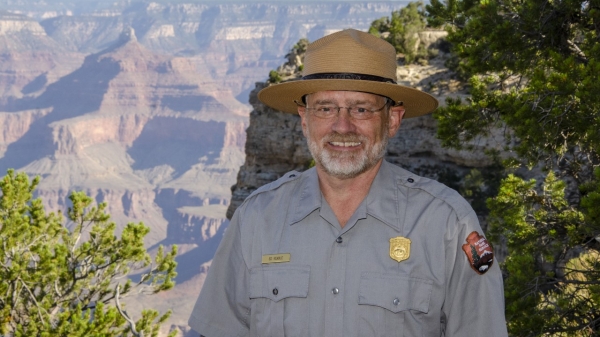ASU celebrates Mexican independence with special concert, 2 days of festivities

Special guest for the ASU Symphony Orchestra concert “¡Viva México!” is Mariachi Garibaldi de Jaime Cuéllar from Los Angeles. Photo courtesy Mariachi Garibaldi
Sept. 16 is one of the most important days in Mexican history. On that date in 1810, in the town of Dolores, Catholic priest Miguel Hidalgo rang the bell of his church and issued the call to arms that set the 11-year-long Mexican War of Independence in motion. That pivotal moment, known as the “Grito de Dolores (Cry of Dolores)” or “El Grito,” would lead to Mexico gaining freedom from Spain after being under that country’s rule for three centuries.
This year, Arizona State University will salute Mexican independence over the course of two days, beginning with the ASU Art Museum’s fifth annual Mexican Independence Day celebration on Friday, Sept. 15, and concluding the evening of Saturday, Sept. 16, with the opening concert of the ASU Symphony Orchestra season, “¡Viva México!,” at ASU Gammage.
Miki Garcia, director of the ASU Art Museum, explained that the decision to celebrate Mexican Independence Day stems from the museum’s vision of centering art and creativity for the purpose of social good and community building.
“While many museums across the country celebrate Dia de los Muertos and Cinco de Mayo, I noticed that the holidays close to the Latinxgender-neutral term for a person from, or whose ancestors were from, a Spanish-speaking land or culture or from Latin America experience — like (Mexican) Independence Day, Dia de las Madres, Dia de los Ninos — were not on the radar,” Garcia said. “With 42% of the population of Phoenix identifying as Latinx and recognizing that several other countries celebrate their Independence Day during this time as well, we were proud to introduce this holiday event and share it with our students, faculty, staff and communities. We hope everyone will feel welcome to celebrate arts and culture at ASU Art Museum.”
Garcia noted that the museum’s independence day celebration falls during Hispanic Heritage Month and credited much of the event’s success to the museum’s partnership with the Consulate General of Mexico, CALA Alliance, ASU Salsa Club, School of Transborder Studies and COVIDLatino. This year’s event at the museum will feature art-making activities, workshops with artist Aileen Martinez, lotería games, face painting, salsa lessons with ASU Salsa Club, music from DJ CRVNT3S and food from Salsa Bites.
“¡Viva México!,” the celebratory concert at ASU Gammage the following night, Sept. 16, features the ASU Symphony Orchestra plus two mariachi groups: the ASU Mariachi Ensemble and special guest Mariachi Garibaldi de Jaime Cuéllar, from Los Angeles. During the concert, School of Music, Dance and Theatre Professor Micha Espinosa and Zarco Guerrero, an internationally known mask maker and mask artist, will also perform.
The concert will be followed by an after-party with music by DJ Claudia; food from Lili’s Taco Shop, Elote Man and Paletas Betty; arts-and-crafts activities; and lawn and table games.
Melita Belgrave, associate dean for culture and access in the Herberger Institute, explains that over the past two years, the Culture and Access Department and Educational Outreach and Student Services have partnered to activate the Multicultural Communities of Excellence with arts and design activities and experiences during the heritage month and weeks in the fall and spring semesters.
“This year we are expanding events to occur anywhere on campus, which allows us to celebrate in even larger ways,” Belgrave said. “We hope that people will stay after the concert and enjoy food, games, music and community with us on the Nelson Fine Arts Plaza located across the street from Gammage Auditorium.
“This collaboration, concert and post-concert party is so exciting and important. The charter of our university talks about inclusion and how individuals succeed as well as our commitment and responsibility to the social, cultural and overall health of the communities it serves. I think this weekend shows the importance of keeping this in mind and why it matters in concert and event programming. It is important for us to celebrate all cultures on the main stage in the arts and design and provide opportunities for us to connect with our ASU and local communities.”
Paola Hidalgo, executive director for Mexico relations in ASU’s Office of Government and Community Engagement, said that the celebration of authentic Mexican culture on the stage of ASU Gammage is a critical demonstration of the importance of ASU’s ties to Mexico and to the Mexican American community.
“ASU has organized a magnificent program for '¡Viva México!' that includes music by Mexican composers followed by traditional mariachi songs,” Hidalgo said. “Both types of music are relevant elements of Mexican culture, and everyone is invited to enjoy this artistic, cultural performance, (as well as continue) the celebration at the after-party.”
Julie Desbordes, ASU orchestras conductor and music director of ASU Philharmonia, calls “¡Viva México!” a perfect opportunity to highlight collaboration and to celebrate the community.
“It’s very important to me that there are entry points for everybody to have an enjoyable and/or transformative experience at a concert,” Desbordes said. “This concert is a perfect example of that. We will bathe in tradition and also discover new colors of what Mexican music is becoming now. The audience will be immersed in an experience where they can participate and be comfortable with the familiarity of those traditional pieces that will be performed as well as be exposed to some new ones.”
Scott Glasser, director of the ASU Mariachi Ensemble, said that the concert’s grand finale will spotlight a powerful combined performance of “Son de la Negra,” which is often referred to as the second national anthem of Mexico.
The ASU Symphony Orchestra will be conducted in the second portion of the program by Sergio Freeman, who holds a master’s degree from the University of Veracruz and is a doctoral student in the School of Music, Dance and Theatre.
In addition to appearing as part of the concert, Jaime Cuéllar, music director of Mariachi Garibaldi, will conduct a master class with ASU Mariachi at 5 p.m. on Sept. 15 in ASU Gammage 311 that is free and open to the public.
The media sponsor for the Sept. 16 events is Telemundo.
Mexican Independence Day 2023
ASU Art Museum
5–8 p.m., Sept. 15
https://asuartmuseum.org/event-exhibition/mexican-independence-day-2023/
¡Viva México! Concert
ASU Gammage
5 p.m., Sept. 16
followed by after-party on the lawn of the Music Building
https://asuevents.asu.edu/event/viva-mexico?eventDate=2023-09-16
More Arts, humanities and education
AI literacy course prepares ASU students to set cultural norms for new technology
As the use of artificial intelligence spreads rapidly to every discipline at Arizona State University, it’s essential for…

Grand Canyon National Park superintendent visits ASU, shares about efforts to welcome Indigenous voices back into the park
There are 11 tribes who have historic connections to the land and resources in the Grand Canyon National Park. Sadly, when the…
ASU film professor part of 'Cyberpunk' exhibit at Academy Museum in LA
Arizona State University filmmaker Alex Rivera sees cyberpunk as a perfect vehicle to represent the Latino experience.Cyberpunk…